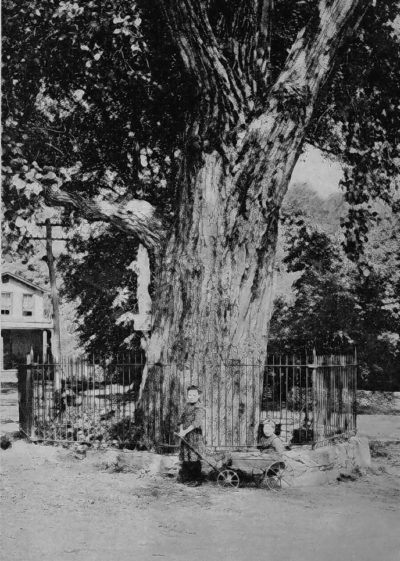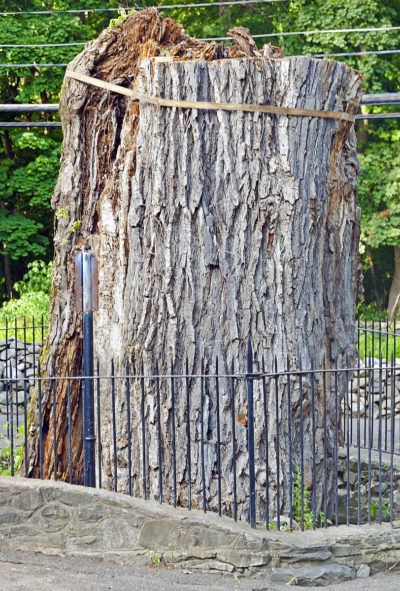The Balmville Tree was more than an Orange County or Hudson Valley landmark. It was rooted in community pride and local legend, a source of pride and a symbol of strength for area residents.
 However it was perceived, the ancient tree had a fascinating history that grew out of a mix of fact and fancy. The Balmville Tree was an old-growth eastern cottonwood growing at the intersection of River Road, Balmville Road, and Commonwealth Avenue in Balmville, New York, a hamlet within the Town of Newburgh. It was the oldest tree of that species in the Eastern United States.
However it was perceived, the ancient tree had a fascinating history that grew out of a mix of fact and fancy. The Balmville Tree was an old-growth eastern cottonwood growing at the intersection of River Road, Balmville Road, and Commonwealth Avenue in Balmville, New York, a hamlet within the Town of Newburgh. It was the oldest tree of that species in the Eastern United States.
Contrary to popular belief, the tree is not named for the surrounding area, Balmville; instead, the surrounding area is named for the tree, which in the early days was thought to be a “Balm”-of Gilead tree. The name Balmville came to be associated with the area around the old tree.
Local folklore has it that the Balmville tree grew on a spot where George Washington planted his walking stick. At the same time, he and the Continental Army were encamped in nearby Newburgh during the later part of the Revolutionary War. Historically, core samples of the tree have dated its growth to 1699. This was well before American independence or the birth of Washington. Sorry George! One less accolade won’t hurt you!
Ad
In the mid-20th century, the tree began to suffer the effects of its advanced age and vandalism. In the mid-1970s, arborists recommended it be removed as a traffic hazard. However, community groups were able to save it, citing its historic value.
After being saved, several protective actions were taken by the state and federal governments. An intricate system of guy wires and metal poles were installed to help support it. The small patch of land on which it grew was also protected, both by the New York State Office of Parks, Recreation and Historic Preservation as a historic site and by the New York State Department of Environmental Conservation as a “public historic park” or state forest, making it New York’s most miniature state forest at 348 square feet in area. It has also been listed on the National Register of Historic Places since 2000.
 On August 5, 2015, the tree was cut down and removed by the New York State Department of Environmental Protection, which cited safety concerns. For several weeks before the removal, the surrounding roads were closed to traffic due to the rapid deterioration of the tree, including the danger of falling limbs.
On August 5, 2015, the tree was cut down and removed by the New York State Department of Environmental Protection, which cited safety concerns. For several weeks before the removal, the surrounding roads were closed to traffic due to the rapid deterioration of the tree, including the danger of falling limbs.
Residents understood the need for this action and did not protest, but the loss of the Balmville Tree was lamented. “There is no Balmville without the Balmville Tree,” one resident commented.
A 15-foot-tall stump remains at the location. It is still a protected area. Many residents took cuttings and will plant them in the hope of carrying on the tree genetically.
One has to admire these ancient trees. They are living history and have witnessed the times and events far beyond the capacity of any human to do so.
The Sojourner
Share this!
022225
